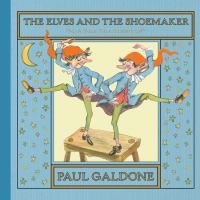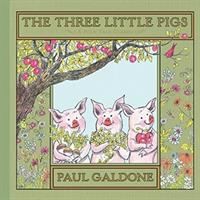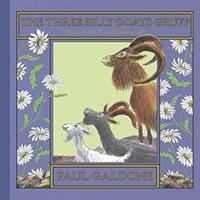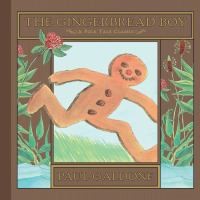Since writing about Greta and the Giants I have been thinking about the value of good literature and folk tales in teaching and encouraging young people to make good choices in life and to strive for higher things. And I thought I would tell you about one of my favourite illustrators, Paul Galdone, who has retold many folk tales and published them in beautiful square books that children love to handle.
Paul Galdone was born in Hungary in 1907 and emigrated to the USA in 1921. He died in 1986. His illustrations appeal to both children and their story-telling adults, and they can pore over the books together, enjoying the sly humour of the illustrations and the beautifully written text of the folk tale. I’ve chosen half a dozen of his illustrated folk tales to review here.
The Elves and the Shoemaker is a story about a very poor shoemaker who is helped by two little elves who make exquisitely beautiful shoes. This is a lovely story of elves and shoemaker helping and encouraging each other. The elves show compassion, the shoemaker and his wife show gratitude. And all are rewarded for generosity and hard work.

In The Little Red Hen, the hen finds that none of her housemates (the dog, the cat and the mouse) will help her with the hard work of making a cake, but they all want to join in when it’s time to eat the cake. The hen can’t force the other animals to help her with the work, but she can use her wits to help them to see that only the ones who work will get the reward of payment. I like the sheepish expressions on the animals’ faces on the last page of Paul Galdone’s book: ‘After that, whenever there was work to be done, the little red hen had three very eager helpers.’

In The Three Little Pigs the wolf manages to overpower and eat two of the pigs, but the third pig is our hero. The wolf tries to trick the pig in the brick house – let’s go to the fair, let’s go and pick apples, let’s go and pick pumpkins, and all that, but the pig uses his wits to beat the sneaky wolf.

Cinderella is a story about forgiveness. Cinderella is kind to others and then when she wins the prince, she is kind to the sisters who have been so unkind to her. And they are repentant and grateful!

The Three Billy Goats use their wits to beat the troll who is tricked because he believes that there is a bigger and better prize for him if he waits for the next goat. The troll is a greedy bully and he meets his match with the largest billy goat. Greediness is not rewarded.

What about The Gingerbread Boy? He gets eaten in the end by the greedy fox. So is this a story of greed and strength winning out? I think it’s a cautionary tale about pride. The gingerbread boy is proud and brags all the time about how fast he can run. He’s a fast, proud runner, but he’s not wise. And his pride and gullibility are his downfall in the end.

All these stories speak for themselves; there’s no need to sermonise and draw attention to the moral. Children can work things out by themselves.
When you are looking for these books in the library you won’t find them in the picture book section. Folk Tales have their own special place in the non-fiction section. So look under the call number 398.2 in the children’s section to discover a whole world of good reading for children.
Write to me about books or homeschooling or family life. Write to stephanie at homeschoolfamily dot com.
